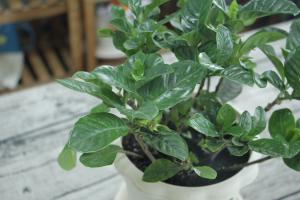Can You Plant Pine Trees in the Desert?
When you think of the desert, you might envision hot, dry and barren regions with little to no vegetation. However, it might surprise you to learn that many types of trees can actually survive and thrive in desert climates, including pine trees.
Understanding Pine Trees
Pine trees are a popular choice for reforestation and landscaping projects around the world. They are known for their evergreen needles and cones, and many types can grow to be quite tall.
When it comes to planting pine trees in the desert, it's important to consider the specific species of pine tree and its unique characteristics. Some pine trees are better suited to arid climates than others, and may be able to withstand the challenges of desert weather and soil conditions.
Challenges of Planting Pine Trees in the Desert
One of the biggest challenges of planting pine trees in the desert is the lack of water. Many desert regions receive very little rainfall, making it difficult for trees to get the moisture they need to survive.
In addition, desert soils tend to be shallow and nutrient-poor, which can make it difficult for trees to establish strong root systems and grow to their full potential. The hot, dry weather and harsh sand and winds can also damage or kill young pine trees.
Techniques for Growing Pine Trees in the Desert
Despite the challenges, it is possible to grow pine trees in the desert with careful planning and management.
One technique is to plant pine trees in areas that receive some moisture, such as near natural springs or water sources. This can help mimic the tree's natural habitat and provide it with the water it needs to survive.
Another approach is to use irrigation systems that deliver water directly to the trees' roots, rather than relying on natural rainfall. This can be a more effective way to provide trees with the moisture they need to grow and thrive.
It's also important to choose the right species of pine tree for the specific desert climate. For example, the Aleppo pine is particularly well-suited to arid regions and has been successfully grown in desert areas across the world.
The Benefits of Planting Pine Trees in the Desert
While planting pine trees in the desert can be challenging, the benefits can be significant.
Pine trees help to reduce erosion and increase soil stability, which is particularly important in desert areas where soil erosion can be a major problem. They also provide shade and shelter for wildlife, and can even help to regulate local temperatures by reducing the amount of heat absorbed by the ground.
In addition, pine trees can be a valuable source of wood products, and can be harvested in a sustainable and environmentally friendly way once they reach maturity.
The Bottom Line
Planting pine trees in the desert might seem like an unlikely proposition, but it is possible with the right techniques and planning. By choosing the right species of pine tree, providing adequate water and nutrients, and taking measures to protect young trees from harsh weather conditions, it's possible to create a vibrant and sustainable ecosystem in even the harshest desert regions.
By doing so, we can help to protect the planet's biodiversity and natural resources, while creating opportunities for sustainable economic growth and environmental stewardship.

 how many times do yo...
how many times do yo... how many planted tre...
how many planted tre... how many pine trees ...
how many pine trees ... how many pecan trees...
how many pecan trees... how many plants comp...
how many plants comp... how many plants can ...
how many plants can ... how many plants and ...
how many plants and ... how many pepper plan...
how many pepper plan...






























